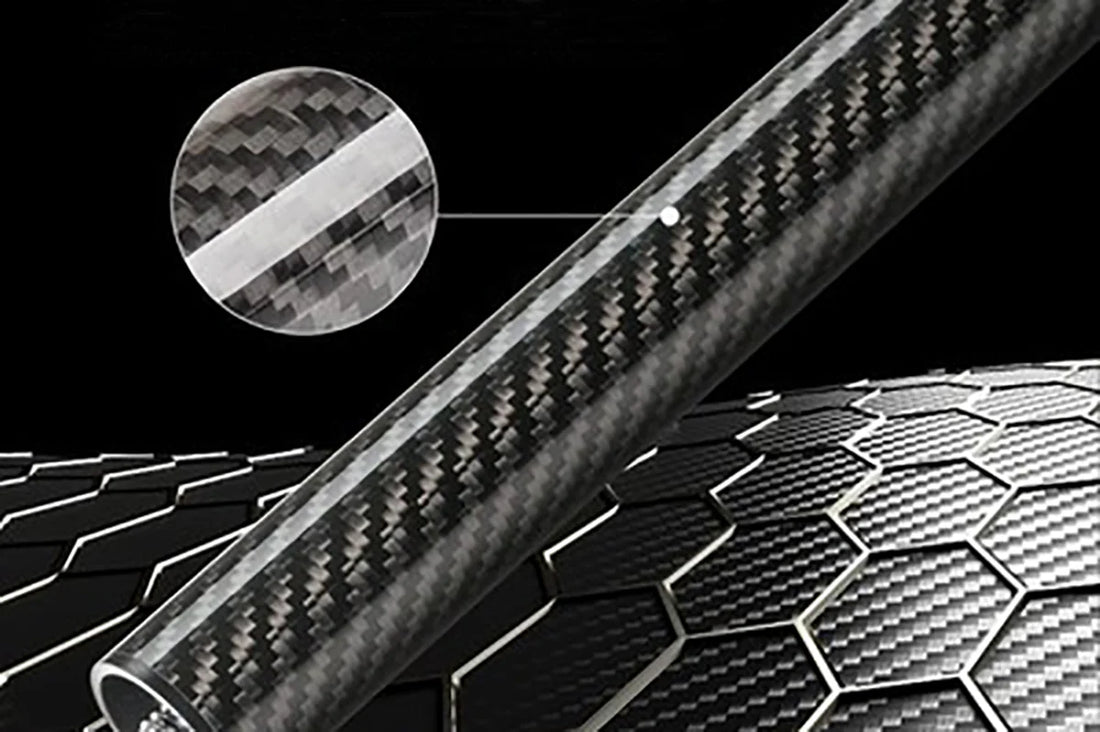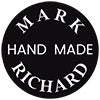
Everything You Need to Know About Carbon Fibre Pool Cues
If you've played pool long enough, you might have noticed that pool cue technology is quietly undergoing a minor revolution. For decades, maple cues have reigned supreme—trusted, reliable, and with that unique feel every player has known since childhood. But recently, a new contender has emerged to challenge the competition: carbon fiber pool cues.
They've been called futuristic, game-changing, and even the "Tesla of pool"—sleek, powerful, and high-performance. But are they truly worthy of the hype? Or are they just a trend that will fade as the novelty wears off?
Let’s break it down properly — no fluff, no jargon, just what you need to know if you’re considering replacing your trusty wooden cue with a more space-age look.
What Exactly Is a Carbon Fibre Cue?
The core of a carbon fiber cue is made of ultra-strong carbon fiber strands woven together and bonded with resin. The result? Lightweight yet incredibly strong, resistant to deformation, and consistent performance.
Traditional English pool cues are made of wood, and while wood is beautiful, it has a small flaw: nature isn't perfect. No two pieces of wood are exactly alike, meaning there can be subtle variations in density, straightness, and even responsiveness. Carbon fiber, on the other hand, is engineered for precision. Every cue shaft is perfectly consistent—no surprises, no warping in a humid room, no bending after years in a cue case.
If you’ve ever pulled out your pool cue after a few months and found it’s developed a slight wobble, you’ll know exactly why players are turning their heads toward carbon fibre.
Why Are Players Switching to Carbon Fibre?
It’s not just about being trendy or modern. There are genuine, game-changing reasons players — from casual pub enthusiasts to pros — are giving these cues serious attention.
1. They Stay Straight — Always
Wood cues can easily be affected by humidity, temperature fluctuations, or storage conditions. A cue stick that's straight in the summer might not be the same in the winter.
Carbon fibre? It doesn’t care about the weather. It stays straight, giving you a predictable and consistent hit every time.
2. Low Deflection: More Accuracy Shots
Here’s where carbon fibre cues truly shine. Because the shaft has lower front-end mass, it causes less cue ball deflection (or “squirt”) when you strike off-centre. In plain English: your cue ball goes where you actually aim it.
You can use sidespin and still maintain accuracy — a huge advantage for players who prefer to control their position with their stroke.
3. Effortless Power and Control
The stiffness of carbon fibre gives you a cleaner, crisper hit. The cue ball reacts more predictably, and you can generate spin with less effort.
Players often describe it as having "more bite"—a satisfying, secure connection that gives you instant feedback without excessive vibration.
4. Low Maintenance
No polishing, oiling, or worrying about cue warping. Just a quick wipe, and your cue is ready to go. For players who want to focus on the game, not the equipment, carbon fibre is a blessing.
5. They Look Stunning
Let's be honest—these cues look like they came straight out of a Formula 1 garage. Sleek, matte black, and minimalist, they're more than just a tool; they're a striking piece. When you walk into a clubhouse with a carbon fiber cue, people will take notice.
The Downside – Because Nothing’s Perfect
Every cue, no matter how advanced, has its own unique characteristics.
1. Price
High-quality carbon fiber cues don't come cheap. Depending on the brand, they can often cost anywhere from £400 to £800 or more. But they last for years, retain their shape, require no replacement, and are extremely low-maintenance—making them a true investment in performance.
2. The “Different Feel”
Some players swear by the traditional "feel" of a wood shaft—that natural feedback, slightly softer feel at impact, and familiar balance they grew up with. This can take some getting used to, especially if you've been using woods for decades.
Some players initially find their shots "too hard" or "too rigid," but after a few practice sessions, many report a more direct and responsive stroke, with less flex and less natural damping, which quickly becomes a win.
3. Sound and Feedback
Carbon cues make a slightly different sound — a sharper click compared to the softer thunk of wood. This feeling is subtle, but purists will notice it. Whether this is a drawback or simply a difference comes down to personal preference.
Choosing the Right Carbon Fibre Cue
If you're considering a replacement, consider the following:
- Weight: Most range between 18–21oz. Option for a lighter weight if you're looking for finesse, or a heavier weight if you're looking for power.
- Shaft Taper: A professional taper offers a traditional feel, while conical tapers give a firmer hit.
- Tip Type: Soft tips enhance spin; hard tips give crisp power shots.
- Joint Type: Make sure your new cue shaft is compatible with your cue butt.
Ultimately, it’s about balance and comfort — the cue should feel like a natural extension of your arm.
Caring for Your Carbon Fibre Cue
One of the biggest advantages of these cues is that they're easy to maintain, but a little care can go a long way.
- Wipe after play: Use a soft cloth to remove chalk and oil stains.
- Avoid harsh cleaners: A small amount of water or cue cleaner will suffice.
- Store properly: Keep it in a cue case away from direct sunlight or damp.
- Protect the cue tip: Use a tip cover when travelling.
- Check joints regularly: Use protectors to keep dust out and ensure a snug fit.
Follow these basic guidelines, and your cue will feel like new for years to come.
Carbon Fibre vs. Wood – The Honest Verdict
|
Feature |
Carbon Fibre Cue |
Wooden Cue |
|
Durability |
Exceptional – warp-free |
Can warp over time |
|
Feel |
Firm, precise |
Softer, traditional |
|
Deflection |
Very low |
Higher |
|
Maintenance |
Minimal |
Needs care |
|
Aesthetic |
Modern, stylish |
Classic, timeless |
|
Price |
Higher upfront |
More affordable |
There's no "better" between the two. It all comes down to what you value most. For some, tradition and craftsmanship always come first. For others, performance and precision are key.
Are They Worth the Money?
Short answer — yes, if you take your game seriously.
Think of it this way: A well-made snooker cue is more than just a piece of equipment; it's an extension of your style and technique. A carbon fiber cue won't make you a world-class player overnight, but it can help eliminate another variable on the road to perfect play.
And when you’re deep into a match, chasing that final pink ball, that consistency can make all the difference.
Frequently Asked Questions (FAQs)
1. Are carbon fibre cues better than wooden cues?
Not necessarily better—just different. Carbon fiber cues offer unparalleled consistency, durability, and low deflection, making them a favorite among many players. Purists, on the other hand, favor wood snooker cues for their more traditional "feel" and warmth. It ultimately comes down to personal preference and playing style.
2. Do carbon fibre cues warp over time?
No—and this is one of their biggest advantages. Unlike wood, carbon fiber doesn't absorb moisture or react to temperature changes. As long as they're properly stored in their cue case, they'll stay straight for years to come.
3. How do I clean and maintain a carbon fibre cue?
Carbon fiber cues are very low-maintenance. After each practice session, simply wipe the shaft with a soft, dry cloth to remove any chalk dust or oil. Avoid using harsh chemicals or abrasives. You can also use a mild cue cleaner to enhance the shine. To protect your billiards cue while traveling, store it in a cue case to prevent scratches and dirt buildup.
4. Do carbon fibre cues feel too stiff compared to wood?
Some players describe them as stiffer or "crisper." Yes, but this isn't necessarily a bad thing. This stiffness contributes to cleaner, more accurate shots, especially on long pots or powerful shots. After a brief adjustment period, most players appreciate the precision and feedback provided by carbon fiber.
5. Can I replace the tip on a carbon fibre cue?
Absolutely. The process is much the same as with wooden cues, but it’s best to use professional tools or consult a repair expert. If you’d like to learn more, check out our guide on how to replace cue tips for simple, step-by-step instructions.
6. Why do carbon fibre cues cost more?
They use advanced materials and manufacturing processes to ensure precision, balance, and durability. While the upfront cost is higher, you'll save money in the long run—no warping, fewer replacements, and years of stability. Think of it as an investment in reliability, rather than just buying a new cue.
7. Are carbon fibre cues suitable for beginners?
Yes, absolutely. In fact, beginners often benefit from their consistency and low deflection, which makes it easier to learn spin and aim. Just be sure to choose the right weight and tip size to match your comfort level.
8. Can I use a carbon fibre cue for both snooker and English pool?
Yes, but the ideal cue type depends on your primary game. Snooker cues typically have a slightly larger tip (9-10mm) and a longer shaft, while English pool cues are shorter and have smaller tips. Some brands offer multi-use cues or interchangeable cue shafts, giving you the best of both worlds.
9. Do professionals use carbon fibre cues?
Yes — an increasing number of top players, particularly in American pool, have switched to carbon fibre shafts. In snooker, it’s still emerging, but as technology evolves, more pros are experimenting with them to improve consistency and accuracy.
10. How long will a carbon fibre cue last?
With proper care, a lifetime. Carbon fibre doesn’t degrade or warp like wood, meaning your cue will maintain its performance for decades. It’s one of those purchases that truly stands the test of time.
The Future Is Here – Carbon Fiber
Whether you're a casual club player or a serious tournament player, carbon fiber cues can breathe new life into your game. It's more than just keeping up with the times—it's about feeling confident every time you strike the cue ball, knowing your equipment won't let you down.
The beauty of snooker and billiards is how timeless they are. Chalk, balls, the green cloth—some things never change. But technology has its place.
Carbon fiber cues represent a new generation of innovation—precision-engineered, reliable, and built for performance. They don't replace traditions; they enhance them. If you've always been curious, maybe it's time to give them a try.
